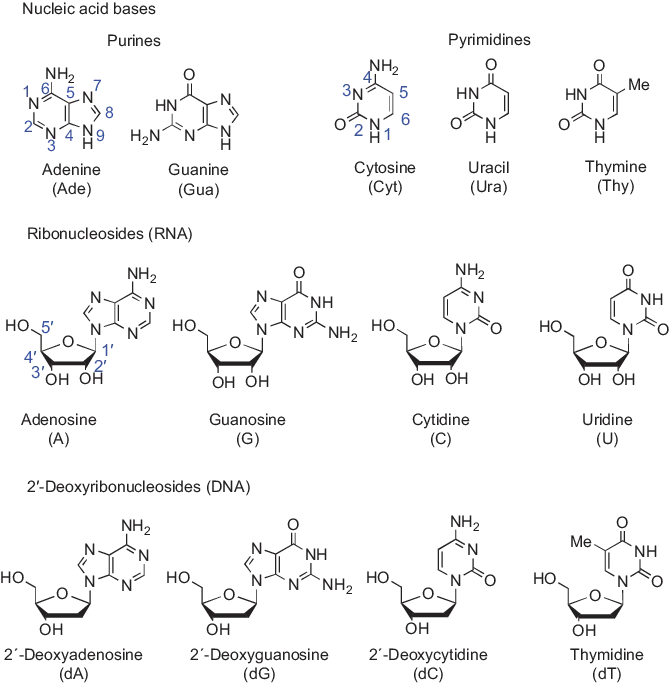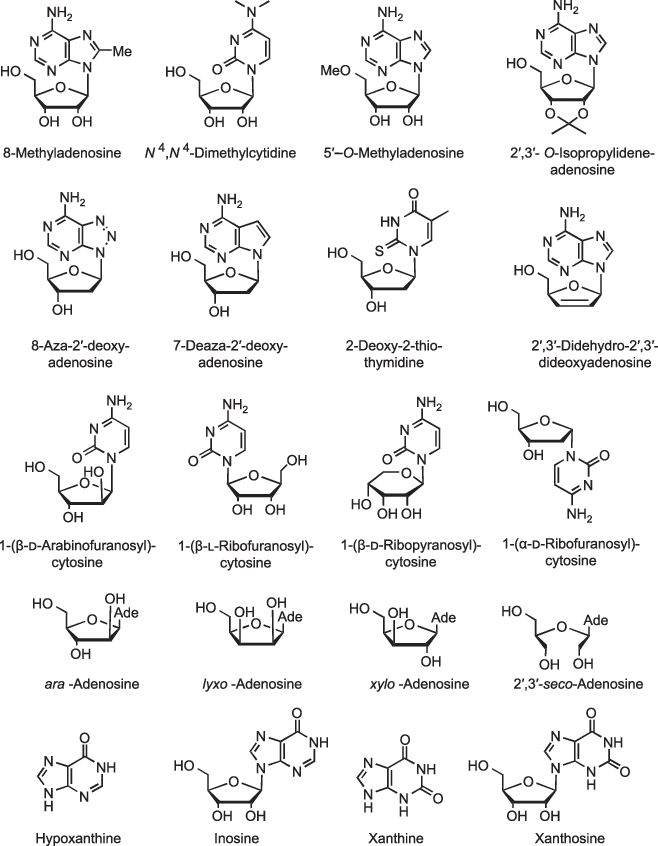
eBook - ePub
Chemistry of Nucleic Acids
Harri Lönnberg
This is a test
Buch teilen
- 364 Seiten
- English
- ePUB (handyfreundlich)
- Über iOS und Android verfügbar
eBook - ePub
Chemistry of Nucleic Acids
Harri Lönnberg
Angaben zum Buch
Buchvorschau
Inhaltsverzeichnis
Quellenangaben
Häufig gestellte Fragen
Wie kann ich mein Abo kündigen?
Gehe einfach zum Kontobereich in den Einstellungen und klicke auf „Abo kündigen“ – ganz einfach. Nachdem du gekündigt hast, bleibt deine Mitgliedschaft für den verbleibenden Abozeitraum, den du bereits bezahlt hast, aktiv. Mehr Informationen hier.
(Wie) Kann ich Bücher herunterladen?
Derzeit stehen all unsere auf Mobilgeräte reagierenden ePub-Bücher zum Download über die App zur Verfügung. Die meisten unserer PDFs stehen ebenfalls zum Download bereit; wir arbeiten daran, auch die übrigen PDFs zum Download anzubieten, bei denen dies aktuell noch nicht möglich ist. Weitere Informationen hier.
Welcher Unterschied besteht bei den Preisen zwischen den Aboplänen?
Mit beiden Aboplänen erhältst du vollen Zugang zur Bibliothek und allen Funktionen von Perlego. Die einzigen Unterschiede bestehen im Preis und dem Abozeitraum: Mit dem Jahresabo sparst du auf 12 Monate gerechnet im Vergleich zum Monatsabo rund 30 %.
Was ist Perlego?
Wir sind ein Online-Abodienst für Lehrbücher, bei dem du für weniger als den Preis eines einzelnen Buches pro Monat Zugang zu einer ganzen Online-Bibliothek erhältst. Mit über 1 Million Büchern zu über 1.000 verschiedenen Themen haben wir bestimmt alles, was du brauchst! Weitere Informationen hier.
Unterstützt Perlego Text-zu-Sprache?
Achte auf das Symbol zum Vorlesen in deinem nächsten Buch, um zu sehen, ob du es dir auch anhören kannst. Bei diesem Tool wird dir Text laut vorgelesen, wobei der Text beim Vorlesen auch grafisch hervorgehoben wird. Du kannst das Vorlesen jederzeit anhalten, beschleunigen und verlangsamen. Weitere Informationen hier.
Ist Chemistry of Nucleic Acids als Online-PDF/ePub verfügbar?
Ja, du hast Zugang zu Chemistry of Nucleic Acids von Harri Lönnberg im PDF- und/oder ePub-Format sowie zu anderen beliebten Büchern aus Biological Sciences & Biochemistry. Aus unserem Katalog stehen dir über 1 Million Bücher zur Verfügung.
Information
1 Nucleosides: structure, nomenclature and solution equilibria
1.1 Nomenclature
Nucleosides, the monomeric constituents of nucleic acids, are N-glycosylated derivatives of two different categories of heteroaromatic nitrogen bases, namely monocyclic pyrimidines and bicyclic purines. The pyrimidine bases are cytosine, uracil and thymine, and the purine bases are adenine and guanine. Uracil occurs only in RNA and thymine in DNA, while the other bases are common for both types of nucleic acids. The structures and enumeration of these canonical nucleic acid bases and nucleosides are depicted in Figure 1.1. As indicated, the glycosyl group is attached to N1 of pyrimidine bases and N9 of purine bases. The enumeration of the glycosyl moiety starts from the anomeric carbon, that is, the carbon atom bound to the nucleobase, not from the ring oxygen. In ribonucleosides (constituents of RNA), the glycosyl moiety is β-d-ribofuranosyl group and in 2′-deoxyribonucleosides (constituents of DNA) 2-deoxy-β-d-erythro-pentofuranosyl group. The latter group is often called 2-deoxy-β-d-ribofuranosyl group, but this name is not consistent with the nomenclature of carbohydrates [1]. The prefix “ribo” refers to a sugar having three stereogenic centers in addition to the anomeric (C1′) carbon. 2-Deoxypentoses contain only two nonanomeric stereogenic centers; hence, the correct prefixes are “erythro” and “threo.” The names of ribonucleosides are derived from the names of their base moieties: adenosine, guanosine, cytidine and uridine. The names of 2′-deoxyribonucleosides have, in turn, been formed from the names of the respective ribonucleosides by a prefix 2′-deoxy, with the exception of thymine derivative. This 2′-deoxyribonucleoside is for historical reasons called just thymidine.

Figure 1.1: The structure and enumeration of nucleic acid bases, ribonucleosides and 2′-deoxyribonucleosides.
The names of substituted or modified nucleosides are derived from the names of the parent nucleosides, as exemplified by a few illustrative examples in Figure 1.2. Substituents on the sugar and base moiety of nucleosides are indicated in the beginning of the name in alphabetical order. A missing ring nitrogen is indicated by a prefix “deaza” and an extra ring nitrogen by a prefix “aza.” One should, however, note that this kind of nomenclature is applicable only as long as the sugar moiety is a five-membered d-sugar having a ribo (for ribonucleosides) or erythro configuration (for 2′-deoxyribonucleosides) and the anomeric configuration is β. If the configuration of the sugar moiety, enantiomeric form or ring size, is changed, the name of the nucleoside is formed by adding the name of the sugar moiety as a substituent to the name of the base moiety. This is also the case when the base moiety is heavily modified. The compound is then named as a glycosylated heterocyclic compound. Sometimes abbreviations such as ara-, lyxo- or xylo-adenosine are used. This means that the sugar moiety still is a β-d-glycofuranosyl group, but the configuration is not any more ribo. In case the sugar ring has been opened by cleaving a C–C bond, the site of the missing bond is indicated by a prefix “seco,” for example, 2′,3′-seco-adenosine. In addition, some noncanonical nucleobases and nucleosides have trivial names that are commonly used. The N2-deamino analogs of guanine and guanosine are called hypoxanthine and inosine, respectively, and the 2-oxo derivatives of these are known as xanthine and xanthosine.

Figure 1.2: Examples of the names of substituted or modified nucleosides.
1.2 Cyclonucleosides
Cyclonucleosides are synthetic analogs of nucleosides having an additional covalent linkage between the sugar and base moiety. Only one cyclonucleoside, 3,5′-anhydro-xanthosine, has bee...